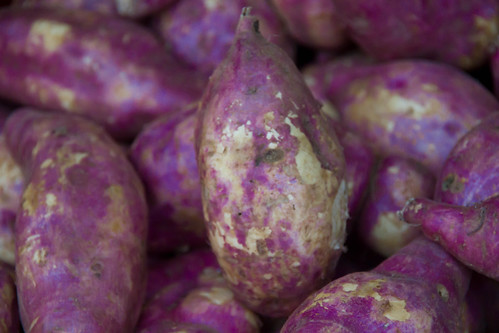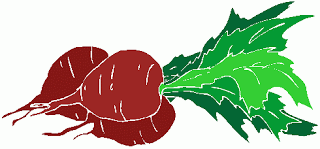Ever wish your favorite comfort food had a bit more pizzazz? It may be high time to diversify from your average meat and potatoes dinner, and this brightly colored vegetable is just the thing. The skin of the purple potato provides a shock of color that can snap us out of our yellow- and red-skinned comas, and boost our health at the same time.
The flesh of these colorful nightshades, praised recently in Mark Bittman’s New York Times column On Growing (And Eating Potatoes), come in many blue and purple varieties, though the Purple Viking and Purple Majesty are two of the most popular for their intense color. They have deep violet, ink-colored skin, and the flesh inside ranges from solid blue to speckled. Perhaps best of all, they taste just like the good old potato that we like so much.
Unearth Healthy Color
We know that blueberries are uniquely advantageous to health because of the pigment in the skin – that deep blue-purple color is a sign of antioxidant richness. Is the same true for a potato hued with blue? Absolutely. While blueberries, particularly wild blueberries, have the high skin-to-pulp ratio and deep color that makes them an antioxidant leader, the antioxidant anthocyanin, responsible for this color, is also behind the skin color of the purple potato. It’s found in other foods, too, like cabbage and eggplant.
While potatoes are challenged with a soiled reputation due to our over-love of the fried variety, potatoes are a vegetable that provides wonderful health benefits. They have moderate fat and calories, are full of vitamins C and B6, and provide a high dose of potassium, an essential nutrient we often get too little of.
Thanks to anthocyanins, the Purple Viking, a white-fleshed potato that Bittman describes as having “a purple skin with pink splashes, as pretty as it sounds” can be depended upon to deliver the anti-cancer, heart-healthy, anti-aging benefits that most deeply colored fruit and veggies do. In fact, they have been recently recognized for their potential to lower blood pressure. Bittman extols the virtues of this earthly purple gem for summer because, he says, they are a delightful food for the grill, and they shine in soups. They also cook and sauté quickly, maintain a perfectly crisp outside, and are full of flavor.
Purple potatoes are often available from local farmers and can be found in local grocery stores, but if you want to plant your very own and you live in Maine, you can obtain your seeds from the Maine Potato Lady in Guilford. Place your seed orders now to ship the last week of April, and you can be fixing up a blue-hued plate in a matter of months that your guests will really dig.
Color Your World! Try These Purple Potato Recipes
- This Fork-Crushed Purple Potato Recipe from Smitten Kitten is a Technicolor delight.
- Eating Well is not afraid to showcase the purple potato’s surprising hue with this recipe for Roasted Garlic Purple Potatoes.
- This Roasted Blue Potato Wedges with Fresh Herbs recipe (with wonderful step-by-step photos from the Hungry Mouse) is no April fool’s joke – the simple dish wears its purple proudly.







